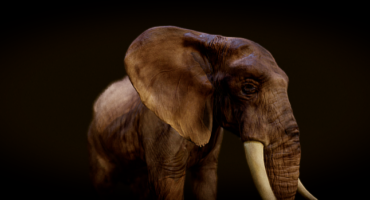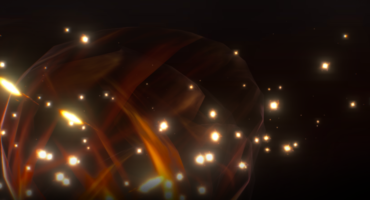Robert Harrison is a 2D/3D artist from the north of England. He works in the games industry and likes to explore different styles of art and experiment with basic geometry and colours in his work.
In this tutorial I’ll show you how to stylise your models by applying materials instead of using in engine lighting in 3DS Max.
I like to start by first finding an interesting colour palette. In this case I used a still from the film Blade Runner as the asset is featured in the film. I tend to pick out 2 main colours per model and vary the tones of them to create depth within my models.

In the material view I create materials slots for the lightest shade of blue and pink and then start to make darker shades. The amount of darker shades depends on the complexity of your model, for simple objects you can get away with only 2 variations. For this model I used 4 blue tones and 2 pink tones and a UV map for the eye.

To apply a colour just select the face you wish to apply it to and drag them over. This can be a tedious process at times and often requires experimentation but the overall outcome is worth it.

I prefer to work in the viewport mode “consistent colours” as it retains the colours brightness when previewed in 3DS Max, it’s not essential but it gives you a better idea of how it’s going to turn out when rendered. Once you’ve applied your colours your basic box should look something like this.

Now you can start carving into your object and creating details depending on what you’re making. Try to stick to a low poly workflow when you’re first starting as it can quickly become a big texturing job later if you have a lot of different faces.

Once you have created a basic box you can start experimenting with different shades. I put the lightest shades on the upward facing polygons and the second darkest shade on the side. If there is an underside or slightly angled edge I’ll sometimes use the darker shades. You could experiment with the direction of light by placing your lightest shades on the sides.

Once you’re comfortable with this method you can start to add in the major object details and maybe introduce new colours to make them pop. Sometimes you might feel the need to add more intricate detail into your texture work, if this is the case you can unwrap sections of your model to paint on. I used photoshop to create some of the monitors on this model.

Here you can see how I’ve used 3 shades in order to vary the colours. Because I render without lighting you need to define the darker areas with darker shades otherwise the colours will merge when rendering.

In order to render your object out pop a skylight into the scene but don’t turn the shadows on, the skylight will light your object from all angles and bring up the overall brightness giving you results similar to the last image.
I hope you enjoyed this quick look into my process! once you have these basic fundamentals down you have the knowledge to make anything you want. I suggest experimenting with all kinds of colour palettes, maybe even throwing in a third or fourth colour. Good luck and make sure to have fun with it!
About the author
Hi my name is Robert Harrison, I’m a 2D/3D artist from the north of England. I graduated from the University of Salford in 2015 with first class honours. I like to explore different styles of art and experiment with basic geometry and colours in my work. I’m currently working on some larger game projects which are soon to be announced. If you’d like to hear more about these projects you can follow me on Facebook and Twitter for updates on both my personal and profesional work. If you’d like to see primarily my art you can also find me here on Sketchfab and on Tumblr.



